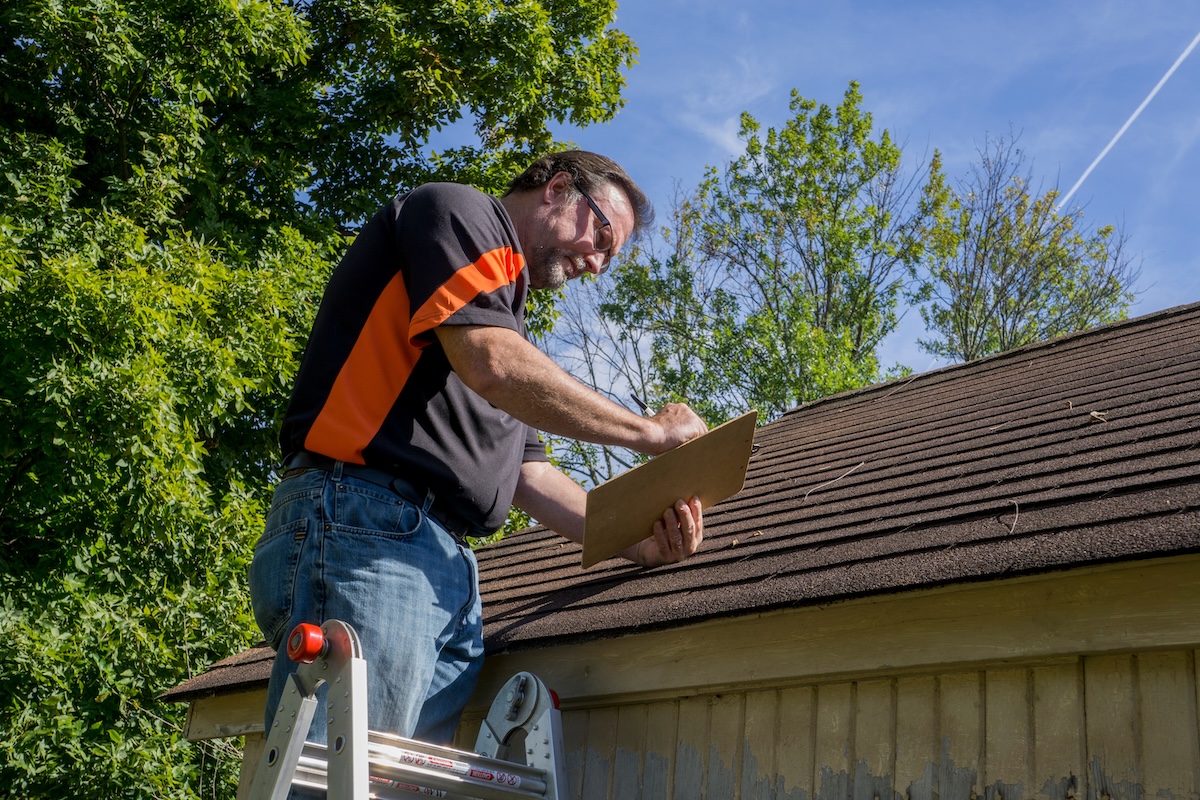Dealing with roof damage can feel overwhelming, especially when you’re trying to navigate insurance paperwork while worrying about protecting your home. Filing a roof insurance claim doesn’t have to be complicated when you understand the process and know what steps to take. This comprehensive guide walks you through everything you need to know about filing a successful roof insurance claim, from initial damage assessment to working with contractors for your roof upgrade.
Here’s what we’ll cover to help you through the roof insurance claim process:
- Understanding when to file a roof insurance claim
- Documenting damage properly for maximum coverage
- Managing the timeline from claim to completion
- Upgrading your roof during the insurance restoration process
When to File a Roof Insurance Claim

Not every roof issue warrants an insurance claim. Understanding when to file can save you time and help maintain a positive relationship with your insurance company. Most homeowners’ insurance policies cover sudden, accidental damage rather than wear and tear from normal aging.
Storm damage represents the most common reason for filing a roof insurance claim. High winds can lift or tear shingles, while hail can create bruising, granule loss, or punctures in your roofing materials. Even if damage appears minimal from ground level, storm events often cause more extensive issues that trained professionals can identify.
Fire damage, fallen trees, and vandalism typically qualify for coverage under standard policies. However, damage from floods, earthquakes, or routine maintenance issues usually requires separate coverage or falls outside policy parameters entirely.
Documenting Damage for Your Insurance Claim
A well-organized claim can streamline the process, leading to a faster and more successful outcome. As renowned roofing company, here’s a some tips on how you can effectively document your roof damage for an insurance claim.
- Take photos from multiple angles, including close-ups, wide shots, ground-level roof shots, interior damage (like water stains or leaks), and damaged gutters/siding. Date-stamp them if possible.
- Keep a detailed written record noting when you discovered the damage, its cause, and its impact on your home. Save receipts for temporary repairs.
- Download weather reports from the National Weather Service to support storm-related claims with data like wind speeds or hail size.
- Review your insurance policy to understand coverage limits, deductibles, and exclusions that may apply.
- Organize all documentation, including photos, written records, weather data, and policy details, to streamline the claims process.
7 Steps to Successfully File and Complete Your Roof Insurance Claim

Filing a roof insurance claim can be overwhelming, but doing it right ensures you get the coverage you deserve. Follow these steps to avoid delays and maximize your claim approval.
1. Contact Your Insurance Company Immediately
Call your insurance company’s claims department as soon as you discover damage. Most companies have 24-hour claim reporting hotlines. Provide basic information about the damage and its suspected cause, whether it was a hailstorm, strong winds, or any other emergency. Request a claim number for all future correspondence.
2. Prevent Further Damage
Take reasonable steps to prevent additional damage to your property. This might include tarping holes, moving possessions away from leak areas, or making other temporary repairs. Save all receipts for materials and labor used in these emergency measures.
3. Document Everything Thoroughly
Photograph all damage from multiple angles and distances. Create written descriptions of damage locations and extent. Collect weather reports and any other supporting evidence that demonstrates the cause and timing of damage.
4. Meet with the Insurance Adjuster
Schedule and attend the adjuster’s inspection. Point out all damage areas and provide your documentation. Ask questions about their assessment process and findings. Request a copy of their report when completed.
5. Review the Settlement Offer
Carefully examine your insurance company’s settlement offer. Compare it against contractor estimates and verify that all damage has been included. Don’t hesitate to question items you don’t understand or disagree with.
6. Select Your Roofing Contractor
Choose a qualified contractor experienced with insurance restoration work. Verify their credentials and get everything in writing before signing any contracts. Ensure they understand your insurance company’s requirements and procedures.
7. Complete the Work and Final Settlement
Work with your contractor to complete repairs according to your insurance company’s requirements. Submit all final documentation and receipts to receive your final insurance payment. Ensure you understand any warranty coverage provided.
⏰ Managing Timeline and Expectations

Roof insurance claims typically take several weeks to several months from initial filing to final settlement. Understanding typical timelines helps you plan accordingly and recognize when delays might indicate problems.
Simple Claims vs. Complex Claims
Simple claims with clear cause and limited damage often resolve within 30 days. Complex claims involving extensive damage, coverage disputes, or multiple properties can take 90 days or longer.
Impact of Weather Conditions
Weather conditions significantly impact timelines. Storm seasons create backlogs for both insurance adjusters and roofing contractors, potentially extending every phase of the process.
Staying on Top of the Process
Stay in regular contact with both your insurance company and contractor. Request updates on claim status, adjuster scheduling, and repair timelines. Document all communications to track progress and identify potential delays early.
🛠️ Upgrading Your Roof Through Insurance Claims
Insurance restoration provides an excellent opportunity to upgrade your roofing system with better materials and improved features. While insurance typically covers like-kind replacements, you can often upgrade by paying the difference in costs.
- Upgrade to Impact-Resistant Shingles: Consider upgrading to impact-resistant shingles, which may qualify for insurance discounts and provide better protection against future hail damage.
- Metal Roofing for Durability and Efficiency: Metal roofing options offer superior durability and energy efficiency, though they require a higher upfront investment.
- Improve Your Roof’s Performance: Improved ventilation systems, upgraded underlayment, and enhanced flashing details can significantly boost your roof’s performance and longevity. Discuss these options with your contractor to understand the costs and benefits.
- Check Insurance Coverage for Code Compliance: Some insurance companies offer additional coverage for code compliance upgrades required by local building departments. Review your policy to see what additional coverage might be available.
👨🔧 Why Choose Professional Insurance Restoration Experts
Successfully navigating roof insurance claims requires expertise in both roofing and insurance processes. Professional restoration contractors bring valuable knowledge and experience that protects your interests throughout the process.
Don’t let roof damage stress overwhelm you. Contact Maumee River Roofing today for a free inspection and consultation about your roof insurance claim. Our experienced team will guide you through every step of the process and ensure your roof gets restored to better-than-before condition.
